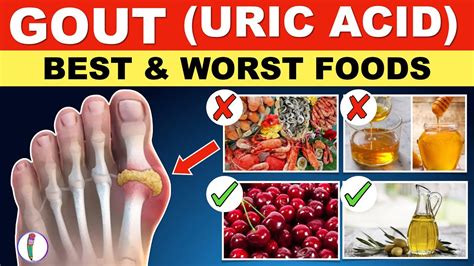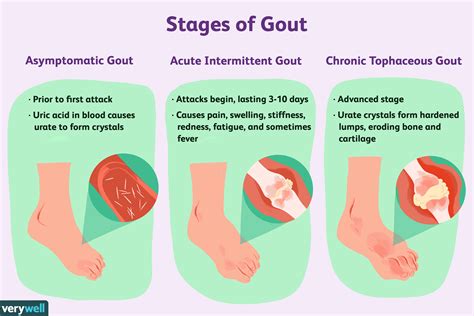Intro
Gout is a type of arthritis that affects millions of people worldwide, causing sudden and severe attacks of pain, swelling, and redness in the joints. One of the key factors that contribute to the development of gout is the presence of purines in the body. Purines are naturally occurring substances that are found in many foods, and they play a crucial role in the production of uric acid, which is the primary culprit behind gout. In this article, we will delve into the world of purines and gout, exploring the relationship between these two entities and discussing the ways in which managing purine intake can help alleviate gout symptoms.
The importance of understanding the link between purines and gout cannot be overstated. For individuals who suffer from gout, knowing how to manage their purine intake can make a significant difference in reducing the frequency and severity of attacks. Moreover, a diet that is low in purines can help prevent gout from developing in the first place. As we explore the complex relationship between purines and gout, we will also examine the various ways in which lifestyle changes, including dietary modifications and increased physical activity, can help mitigate the effects of gout.
Gout is a complex condition that is influenced by a variety of factors, including genetics, diet, and lifestyle. While it is not possible to completely eliminate the risk of developing gout, understanding the role that purines play in its development can help individuals take proactive steps to reduce their risk. By making informed choices about the foods they eat and the activities they engage in, people can take control of their health and reduce their likelihood of experiencing the debilitating symptoms of gout. In the following sections, we will explore the world of purines and gout in greater detail, discussing the benefits and challenges of managing purine intake and examining the various ways in which lifestyle changes can impact gout symptoms.
Purines And Uric Acid Production

The production of uric acid from purines is a complex process that involves several different enzymes and biochemical pathways. Normally, the body is able to regulate the amount of uric acid that is produced and remove any excess uric acid through the kidneys. However, in people with gout, this regulatory process can become disrupted, leading to an overproduction of uric acid and the subsequent development of gout symptoms. Understanding the biochemical pathways that are involved in uric acid production can help researchers develop new treatments for gout and can also inform dietary recommendations for individuals who are at risk of developing the condition.
Types Of Purines
There are several different types of purines that are found in foods, including adenine, guanine, hypoxanthine, and xanthine. These purines can be divided into two main categories: endogenous purines, which are produced by the body, and exogenous purines, which are obtained through the diet. Endogenous purines are produced by the body as a byproduct of cellular metabolism and are normally broken down and removed by the kidneys. Exogenous purines, on the other hand, are obtained through the consumption of purine-rich foods and can contribute to the development of gout in susceptible individuals.Dietary Sources Of Purines

For individuals who are at risk of developing gout, it is essential to be aware of the purine content of different foods and to make informed choices about their diet. By limiting or avoiding foods that are high in purines, individuals can reduce their risk of developing gout and can also help alleviate symptoms if they already have the condition. In addition to avoiding purine-rich foods, individuals can also take steps to increase their intake of foods that are low in purines, such as fruits, vegetables, and whole grains.
Low-Purine Diet
A low-purine diet is a dietary approach that involves limiting or avoiding foods that are high in purines. This type of diet can be beneficial for individuals who are at risk of developing gout or who already have the condition. Some of the key principles of a low-purine diet include avoiding organ meats, seafood, and certain types of meat, such as beef and pork. It is also recommended to limit or avoid foods that are high in sugar, salt, and saturated fat, as these can exacerbate gout symptoms.In addition to avoiding purine-rich foods, a low-purine diet also involves increasing intake of foods that are low in purines, such as fruits, vegetables, and whole grains. Some of the best foods for a low-purine diet include berries, citrus fruits, and leafy green vegetables, such as spinach and kale. Whole grains, such as brown rice, quinoa, and whole-wheat bread, are also good choices, as are lean protein sources, such as chicken, turkey, and fish.
Managing Gout Symptoms

In addition to lifestyle changes, dietary modifications can also play a crucial role in managing gout symptoms. Avoiding foods that are high in purines, such as organ meats and seafood, can help reduce uric acid production and alleviate gout symptoms. Increasing intake of foods that are low in purines, such as fruits, vegetables, and whole grains, can also help reduce inflammation and promote overall health.
Gout Treatment Options
There are several different treatment options available for gout, including medications, lifestyle changes, and alternative therapies. Medications, such as nonsteroidal anti-inflammatory drugs (NSAIDs) and colchicine, can help reduce pain and inflammation during gout attacks. Lifestyle changes, such as maintaining a healthy weight and avoiding purine-rich foods, can also help reduce the frequency and severity of gout attacks.Alternative therapies, such as acupuncture and herbal supplements, may also be beneficial in managing gout symptoms. Some of the most commonly used herbal supplements for gout include turmeric, ginger, and willow bark, which have anti-inflammatory properties and may help reduce pain and inflammation. However, it is essential to consult with a healthcare professional before using any alternative therapies, as they may interact with medications or have adverse effects in certain individuals.
Preventing Gout

In addition to lifestyle changes, dietary modifications can also play a crucial role in preventing gout. Avoiding foods that are high in purines, such as organ meats and seafood, can help reduce uric acid production and lower the risk of developing gout. Increasing intake of foods that are low in purines, such as fruits, vegetables, and whole grains, can also help reduce inflammation and promote overall health.
Risk Factors For Gout
There are several different risk factors that can increase an individual's likelihood of developing gout. Some of the most significant risk factors include genetics, age, and sex, as well as certain medical conditions, such as high blood pressure and diabetes. Dietary factors, such as a diet that is high in purines and low in fruits and vegetables, can also increase the risk of developing gout.Other risk factors for gout include obesity, lack of physical activity, and certain medications, such as diuretics and beta blockers. Individuals who have a family history of gout or who have experienced a previous gout attack are also at increased risk of developing the condition. By understanding these risk factors, individuals can take proactive steps to reduce their risk of developing gout and can also seek medical attention if they experience any symptoms of the condition.
Gout And Other Health Conditions

Diabetes can also increase the risk of developing gout by reducing the body's ability to regulate blood sugar levels and increasing inflammation. Kidney disease can also increase the risk of developing gout by reducing the kidneys' ability to remove uric acid from the body. By managing these underlying health conditions, individuals can reduce their risk of developing gout and can also alleviate gout symptoms.
Managing Comorbidities
Managing comorbidities, such as high blood pressure and diabetes, is essential for reducing the risk of developing gout and alleviating gout symptoms. This can involve lifestyle changes, such as maintaining a healthy weight and engaging in regular exercise, as well as medical treatment, such as medications and insulin therapy.In addition to managing comorbidities, individuals can also take steps to reduce their risk of developing gout by avoiding foods that are high in purines and increasing their intake of foods that are low in purines. By taking a comprehensive approach to health, individuals can reduce their risk of developing gout and can also alleviate gout symptoms.
Conclusion And Future Directions

As research continues to uncover the complexities of gout, new treatments and therapies are being developed to help manage the condition. From medications and lifestyle changes to alternative therapies and dietary modifications, there are many different approaches to managing gout symptoms and reducing the risk of developing the condition. By staying informed and taking proactive steps to manage their health, individuals can reduce their risk of developing gout and can also alleviate gout symptoms.
We encourage readers to share their thoughts and experiences with gout in the comments section below. Have you or a loved one been affected by gout? What steps have you taken to manage your symptoms and reduce your risk of developing the condition? By sharing our knowledge and experiences, we can work together to promote greater awareness and understanding of gout and to develop more effective treatments and therapies for the condition.
What are purines and how do they relate to gout?
+Purines are organic compounds that are found in many foods and are broken down into uric acid in the body. Elevated levels of uric acid can lead to the development of gout, a type of arthritis that causes sudden and severe attacks of pain, swelling, and redness in the joints.
What foods are high in purines and should be avoided by individuals with gout?
+Foods that are high in purines and should be avoided by individuals with gout include organ meats, such as liver and kidney, as well as certain types of seafood, such as anchovies and sardines. Other foods that are high in purines include beef, pork, lamb, and game meats, such as venison and buffalo.
What lifestyle changes can help manage gout symptoms and reduce the risk of developing the condition?
+Lifestyle changes that can help manage gout symptoms and reduce the risk of developing the condition include maintaining a healthy weight, engaging in regular exercise, and avoiding foods that are high in purines. Increasing intake of foods that are low in purines, such as fruits, vegetables, and whole grains, can also help reduce inflammation and promote overall health.
